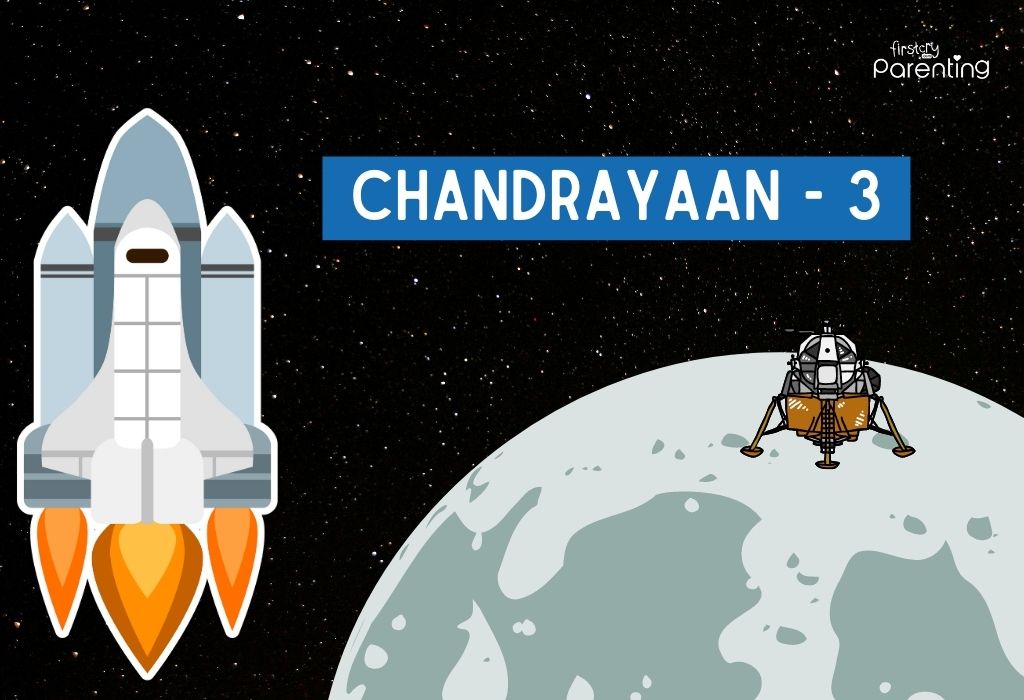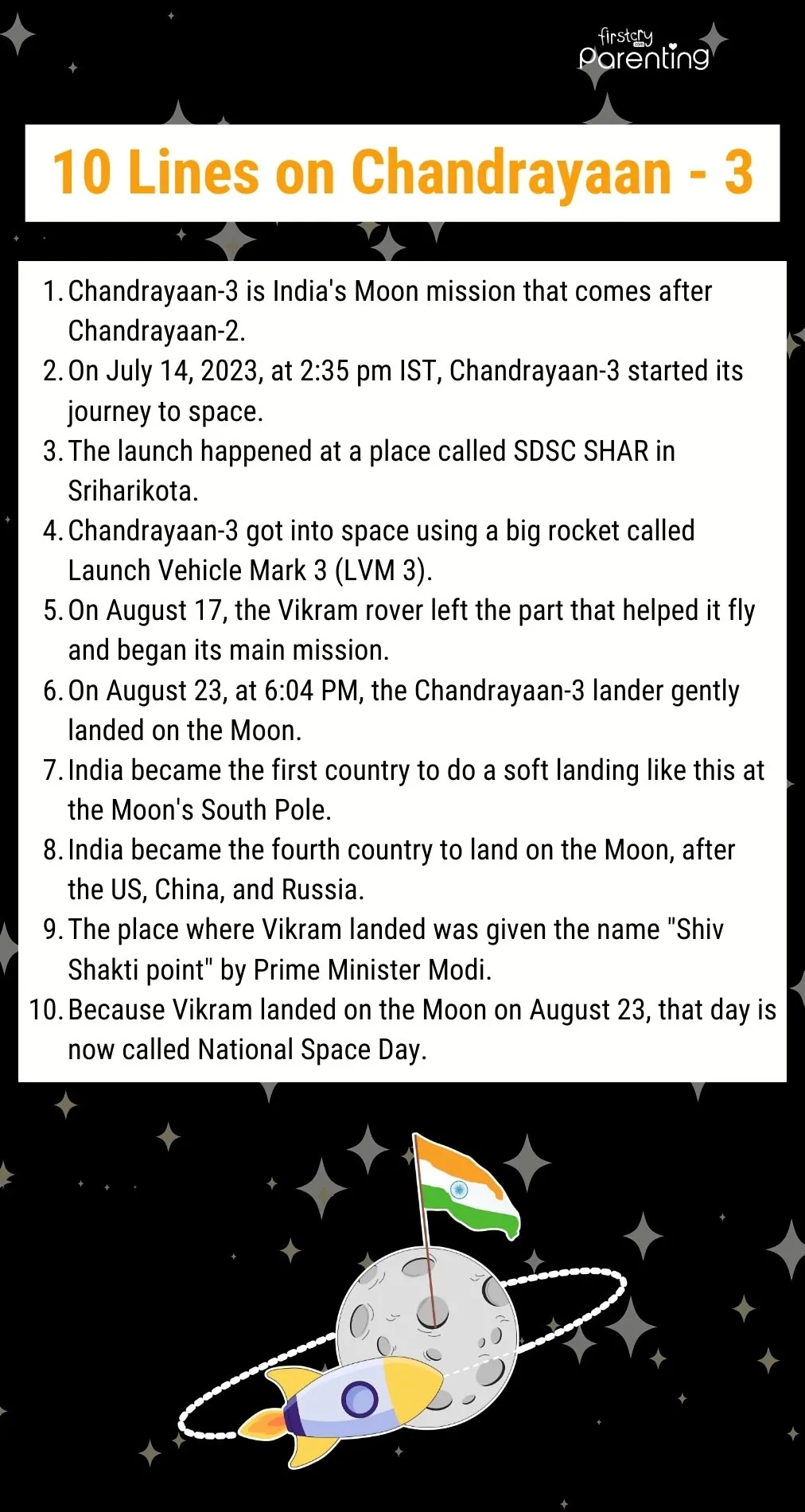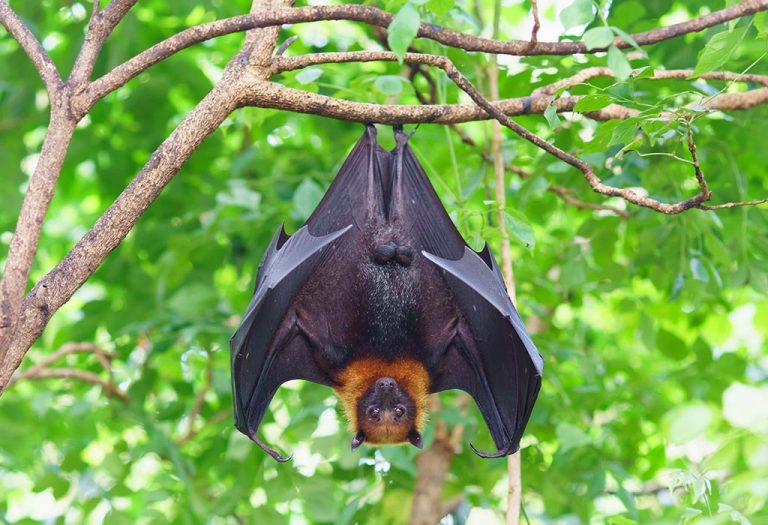- School & Boards
- College Admission
- Govt Jobs Alert & Prep
- Current Affairs
- GK & Aptitude

Chandrayaan 3 Essay in English for School Students
Essay on chandrayaan 3 for school students: check here 100, 200 words essay on india's latest moon mission chandrayaan 3. students can also use this as a short speech for school assemblies or speech competitions. they, can also check the latest chandrayaan 3 updates to easily edit elements and elongate their essay as per their requirement..

Chandrayaan 3 Essay and Short Speech in English for School Students: Chandrayaan-3, which marked India's historic achievement as the first country to land near the lunar South Pole, has been honoured with the prestigious World Space Award by the International Astronautical Federation. The award ceremony will take place on October 14 during the opening ceremony of the 75th International Astronautical Congress in Milan, Italy.
Chandrayaan 3 was a gigantic success for India and now its Pragyaan rover has gone to sleep. To commemorate Chandrayaan 3 triumph and the soft landing of Vikram lander on the moon, National Space Day will be celebrated on August 23 every year as announced by PM Modi. Every Indian is proud of the soft landing of Chandrayaan 3 on the moon! In the latest update by ISRO, the propulsion module of Chandrayaan 3 has been brought back into the Earth's orbit.
As per ISRO's other update, t he Rover had completed its assignments and was parked and set into Sleep mode. The Chandrayaan 3 Rover Pragyaan had ramped down from the Lander a while after its landing on August 23rd. Pragyan rover was continuously walking on the moon and sending various details to the ISRO centre.
Related: Chandrayaan 3: Will Pragyan Rover Wake Up Again? ALL You Need To Know
In the vast space of our universe, where mythology and science come together so often, Chandrayaan-3 shines brightly as a symbol of India’s astral hope and exploration. It shows India's strong determination to uncover the moon's mysteries. With careful planning and robust designs, Chandrayaan-3 has gotten us closer to landing on the moon and discovering its hidden secrets. In this article, we have provided an essay on Chandrayaan in about 100 and 200 words that you refer for the 1st National Space Day 2024. Students can easily refer to this essay and come up with their own modifications and tweaks in the essay body.
- चंद्रयान 3 पर हिंदी निबंध और भाषण: Chandrayaan 3 Essay in Hindi for School Students
- National Space Day Essay in Hindi
- National Space Day 2024: CBSE Guidelines and Activities For Schools
Chandrayaan 3 Details
Latest updates and information about chandrayaan 3.
- August 2024: Central Government annouced August 23 as the NATIONAL SPACE DAY to hounour the landmark achievement of Chandrayaan 3.
- January 22, 2024
NASA Spacecraft Pings India’s Chandrayaan-3 on the Moon:
- September 22, 2023
Chandrayaan-3 Mission: Efforts have been made to establish communication with the Vikram lander and Pragyan rover to ascertain their wake-up condition. As of now, no signals have been received from them. Efforts to establish contact will continue. — ISRO (@isro) September 22, 2023
- September 5, 2023
. @NASA 's LRO spacecraft recently imaged the Chandrayaan-3 lander on the Moon’s surface. The ISRO (Indian Space Research Organization) Chandrayaan-3 touched down on Aug. 23, 2023, about 600 kilometers from the Moon’s South Pole. MORE >> https://t.co/phmOblRlGO pic.twitter.com/CyhFrnvTjT — NASA Marshall (@NASA_Marshall) September 5, 2023
- September 2, 2023
Chandrayaan-3 Mission: The Rover completed its assignments. It is now safely parked and set into Sleep mode. APXS and LIBS payloads are turned off. Data from these payloads is transmitted to the Earth via the Lander. Currently, the battery is fully charged. The solar panel is… — ISRO (@isro) September 2, 2023
Chandrayaan-3 Mission: In-situ scientific experiments continue ..... Laser-Induced Breakdown Spectroscope (LIBS) instrument onboard the Rover unambiguously confirms the presence of Sulphur (S) in the lunar surface near the south pole, through first-ever in-situ measurements.… pic.twitter.com/vDQmByWcSL — ISRO (@isro) August 29, 2023
- August 26, 2023: National Space Day on August 23rd, Announced by PM Modi to mark the success of Chandrayaan 3 on the moon.
- Chandrayaan 3 touchdown point on the moon will now be known as Shivshakti.
- Chandrayaan 2 touchdown point on the moon's surface will now be known as Tiranga Point.
Chandrayaan-3 Mission: Here are the first observations from the ChaSTE payload onboard Vikram Lander. ChaSTE (Chandra's Surface Thermophysical Experiment) measures the temperature profile of the lunar topsoil around the pole, to understand the thermal behaviour of the moon's… pic.twitter.com/VZ1cjWHTnd — ISRO (@isro) August 27, 2023
Chandrayaan-3 Mission: All planned Rover movements have been verified. The Rover has successfully traversed a distance of about 8 meters. Rover payloads LIBS and APXS are turned ON. All payloads on the propulsion module, lander module, and rover are performing nominally.… — ISRO (@isro) August 25, 2023
Chandrayaan-3 Mission: Chandrayaan-3 ROVER: Made in India 🇮🇳 Made for the MOON🌖! The Ch-3 Rover ramped down from the Lander and India took a walk on the moon ! More updates soon. #Chandrayaan_3 #Ch3 — ISRO (@isro) August 24, 2023
- August 23, 2023: India's lunar mission Chandrayaan 3 has successfully landed on the south pole of the moon.
- August 20, 2023: The Lander Module is in 25 km x 134 km orbit. Powered descent is expected to commence on August 23, 2023, around 1745 Hrs. IST
- August 19, 2023: The Lander Module is in 113 km x 157 km orbit around the moon. Second de-boosting is planned for August 20, 2023
- August 17, 2023: Lander Module is successfully separated from the Propulsion Module. Deboosting planned for August 18, 2023
- August 16, 2023: The spacecraft is in an orbit of 153 km x 163 km after the firing on August 16, 2023
- August 14, 2023: The mission is in the orbit circularisation phase. The spacecraft is in 151 km x 179 km orbit
- August 09, 2023: Chandrayaan-3's orbit is reduced to 174 km x 1437 km following a manoeuvre performed on August 9, 2023
- July 06, 2023: The launch is scheduled for July 14, 2023, at 14:35 Hrs. IST from the Second Launch Pad, SDSC-SHAR, Sriharikota
Chandrayaan History - Chandrayaan 1, 2 and 3
Is chandrayaan-3 successfully landed on moon.
Yes, Chandrayaan 3 has successfully made a successful landing on the Southern pole of the Moon.
Chandrayaan-3 Mission: 'India🇮🇳, I reached my destination and you too!' : Chandrayaan-3 Chandrayaan-3 has successfully soft-landed on the moon 🌖!. Congratulations, India🇮🇳! #Chandrayaan_3 #Ch3 — ISRO (@isro) August 23, 2023
Chandrayaan 3 Photos and Videos
Chandrayaan-3 Mission: 🔍What's new here? Pragyan rover roams around Shiv Shakti Point in pursuit of lunar secrets at the South Pole 🌗! pic.twitter.com/1g5gQsgrjM — ISRO (@isro) August 26, 2023
Get here latest School , CBSE and Govt Jobs notification and articles in English and Hindi for Sarkari Naukari , Sarkari Result and Exam Preparation . Download the Jagran Josh Sarkari Naukri App .
- UPPSC Question Paper 2024
- UGC NET Exam Date 2024
- UP PCS Question Paper 2024
- AIBE Answer Key 2024
- SSC GD Cut Off 2024
- RRB JE 2024
- SBI Clerk Recruitment Notification 2024
- Pariksha Pe Charcha 2025
- CBSE 12th Date Sheet 2025
- CBSE 10th Date Sheet 2025
- Education News
- CBSE Class 10
Latest Education News
IAF Agniveervayu Recruitment 2024-25: Registration Starts For Intake 01/2026 From January 7, Check Eligibility
Rajasthan RSMSSB Stenographer Result 2024 जारी हुआ,डाउनलोड करें कट ऑफ मार्क्स और रिजल्ट पीडीएफ
Rajasthan BSTC 1st Year Result 2024 जारी हुआ, इस डायरेक्ट लिंक rajshaladarpan.nic.in से डाउनलोड करें स्कोरकार्ड
Rajasthan Jail Prahari Syllabus 2025: डाउनलोड करें राजस्थान जेल प्रहरी परीक्षा का नया सिलेबस और एग्जाम पैटर्न PDF
Rajasthan Jail Prahari Vacancy 2024: राजस्थान में निकली बंपर भर्तियां, जानें कब और कैेसे करें आवेदन
RPSC 2nd Grade Admit Card 2024: कल जारी होगा राजस्थान सीनियर टीचर भर्ती परीक्षा के एडमिट कार्ड, यहां मिलेगा Direct Link
[लिंक एक्टिव] RRB JE Answer Key 2024 OUT: आरआरबी जेई उत्तर कुंजी rrbcdg.gov.in पर जारी, डाउनलोड करें जूनियर इंजीनियर रिपॉन्स शीट PDF
Today's School Assembly Headlines (24 December 2024): India Shines Globally: Nusrath Fatima Wins Silver, $500 Million ADB Loan Secured, and PM Modi Speaks Against Disharmony at Christmas Celebrations
Registration Opens for Mukhya Mantri Mahila Samman Yojana: Check Who will benefit from this Scheme
Spot the Differences Between the Surfer Pictures in 17 Seconds!
Christmas Card Design 2024: Creative and Unique Designs for School Students
Top 50 Christmas Songs You Need to Add to Your Playlist This Holiday Season
Which Three States of India have Two Capitals, Check Here
CBSE Class 10 Social Science Syllabus for Board Exam 2025, Download in PDF
Christmas Board Decoration for Schools: Check Top 10 Easy and Beautiful Ideas Here
Christmas Bell Drawing 2024: Check 10 Best Jingle Bell Drawing Ideas for Kids and Students
Maha Kumbh 2025: हर 12 साल में ही क्यों होता है महाकुंभ का आयोजन, यहां जानें
Maha Kumbh 2025: महाकुंभ के लिए रेलवे की बड़ी तैयारी, यहां देखें स्पेशल ट्रेनों की लिस्ट
Christmas Greeting Card for Friends: Warm Messages to Celebrate the Christmas (2024)
NALCO Recruitment 2024: Notification Out for 518 Posts, Check Eligibility and Other Details

Essay on Chandrayaan 3 in English (150, 200, 250, 500 Words)
Here, we’ve presented essays on “Chandrayaan 3” in 150, 200, 250 & 500 word samples. All the essays will be helpful for students of all classes i.e. 1, 2, 3, 4, 5, 6, 7, 8, 9, 10, 11 & class 12.
Table of Contents
Essay on Chandrayaan 3 in 150 Words
Introduction.
Chandrayaan 3 is India’s third lunar exploration mission, developed by the Indian Space Research Organisation (ISRO). Following the partial success of Chandrayaan 2, Chandrayaan 3 aims to achieve a successful soft landing on the moon’s surface. This mission reflects India’s continued commitment to space exploration.
Mission Objectives
Chandrayaan 3’s primary objective is to land safely on the lunar surface and conduct scientific experiments. Unlike its predecessor, Chandrayaan 3 does not include an orbiter, focusing solely on the lander and rover components. The mission seeks to improve the technology for landing on the moon, conduct in-situ scientific experiments, and demonstrate the ability to operate a rover on the lunar surface. These objectives will help enhance our understanding of the moon’s geology and contribute to future lunar missions.
Chandrayaan 3 represents a significant step for India’s space program. By focusing on landing and rover operations, it aims to overcome the challenges faced by previous missions. Success in this endeavor will mark a major achievement for ISRO and inspire further advancements in space exploration.

Chandrayaan 3 Essay in 200 Words
Chandrayaan 3 is India’s third lunar exploration mission, developed by the Indian Space Research Organisation (ISRO). Following the partial success of Chandrayaan 2, Chandrayaan 3 aims to achieve a successful soft landing on the moon’s surface. This mission demonstrates India’s dedication to advancing its capabilities in space exploration.
Mission Overview
Chandrayaan 3’s primary objective is to land safely on the lunar surface and conduct scientific experiments. Unlike its predecessor, Chandrayaan 3 does not include an orbiter. The mission focuses solely on the lander and rover components. This streamlined approach allows ISRO to concentrate resources and efforts on ensuring a successful landing and operation of the rover.
Technological Advancements
Chandrayaan 3 incorporates several technological improvements over its predecessors. Enhanced navigation systems, robust communication tools, and more reliable landing gear are key features of the mission. These advancements are designed to address the issues faced by Chandrayaan 2, particularly the challenges encountered during the landing phase. By refining these technologies, ISRO aims to ensure a smooth and successful mission.
Scientific Goals
The scientific goals of Chandrayaan 3 include conducting in-situ experiments to study the lunar surface. The rover is equipped with instruments to analyze the moon’s geology and gather data on its composition. This information will contribute to our understanding of the moon’s history and evolution. Additionally, the mission aims to demonstrate the capability to operate a rover in the harsh lunar environment, paving the way for future explorations.
Chandrayaan 3 represents a significant step forward for India’s space program. By focusing on landing and rover operations, it aims to overcome the challenges faced by previous missions. Success in this endeavor will mark a major achievement for ISRO, enhancing India’s reputation in the global space community and inspiring further advancements in space exploration.
Essay Writing on Chandrayaan 3 in 250 Words
Chandrayaan 3 is India’s third lunar exploration mission, spearheaded by the Indian Space Research Organisation (ISRO). Following the partial success of Chandrayaan 2, this mission aims to achieve a successful soft landing on the moon’s surface, reflecting India’s commitment to advancing its space exploration capabilities.
Chandrayaan 3’s primary objective is to safely land on the lunar surface and conduct scientific experiments. Unlike its predecessor, Chandrayaan 3 does not include an orbiter, focusing solely on the lander and rover components. This approach allows ISRO to direct resources and efforts towards ensuring a successful landing and efficient operation of the rover, streamlining the mission for better chances of success.
Chandrayaan 3 incorporates several technological improvements over its predecessors. Enhanced navigation systems, robust communication tools, and more reliable landing gear are key features of the mission. These advancements aim to address the challenges faced by Chandrayaan 2, particularly the issues during the landing phase. By refining these technologies, ISRO seeks to ensure a smooth and successful mission, enhancing India’s expertise in lunar exploration.
The scientific goals of Chandrayaan 3 include conducting in-situ experiments to study the lunar surface. The rover is equipped with advanced instruments to analyze the moon’s geology, mineralogy, and surface composition. This data will contribute to our understanding of the moon’s history and evolution, offering insights into its formation and the broader dynamics of our solar system.
Future Implications
Chandrayaan 3’s success could pave the way for future lunar missions and potential collaborations with other space agencies. Demonstrating the capability to land and operate a rover on the moon will enhance India’s standing in the global space community. This mission could also inspire further advancements in space technology and exploration, driving innovation and scientific discovery.
Chandrayaan 3 represents a significant milestone for India’s space program. By focusing on landing and rover operations, it aims to overcome the challenges faced by previous missions. Achieving success in this endeavor will mark a major achievement for ISRO, solidifying India’s position in the global space arena and inspiring future space exploration efforts.
Writing an Essay on Chandrayaan 3 in 500 Words
Chandrayaan 3 is the third lunar exploration mission by the Indian Space Research Organisation (ISRO). Building on the experiences of Chandrayaan 1 and Chandrayaan 2, Chandrayaan 3 aims to accomplish a successful soft landing on the moon. This mission underscores India’s growing capabilities and ambitions in space exploration.
Historical Context
India’s lunar exploration journey began with Chandrayaan 1 in 2008, which was primarily an orbiter mission that made significant discoveries, including evidence of water molecules on the moon. Chandrayaan 2, launched in 2019, included an orbiter, lander, and rover. While the orbiter continues to function and send valuable data, the lander Vikram failed to make a soft landing. Chandrayaan 3 is designed to rectify the shortcomings of Chandrayaan 2 and achieve the milestone of a successful lunar landing.
Mission Components
Chandrayaan 3 comprises a lander and a rover, excluding an orbiter as the Chandrayaan 2 orbiter is still operational and continues to provide lunar data. The lander is designed to carry the rover to the moon’s surface and deploy it for scientific exploration. This mission’s focused approach aims to enhance the probability of a successful landing by dedicating all resources to the lander and rover.
Technological Enhancements
One of the significant aspects of Chandrayaan 3 is the incorporation of technological enhancements. The mission features improved landing gear to handle the moon’s surface’s challenging terrain better. The navigation and guidance systems have been upgraded for more precise landing operations. Additionally, enhanced communication systems ensure robust data transmission between the lander, rover, and Earth. These advancements are intended to mitigate the risks that led to the failure of Chandrayaan 2’s Vikram lander.
Scientific Objectives
Chandrayaan 3 aims to conduct in-situ experiments to analyze the lunar surface’s composition and properties. The rover is equipped with advanced scientific instruments to study the moon’s geology, mineralogy, and surface chemistry. By collecting and analyzing this data, the mission seeks to deepen our understanding of the moon’s history, its formation, and its evolution. This knowledge is crucial for future lunar missions and the potential for sustained human presence on the moon.
Importance of Lunar Exploration
Lunar exploration is vital for several reasons. The moon serves as a testbed for technologies and systems that will be used in more distant space missions. Understanding the moon’s resources, such as water ice, is essential for future lunar bases and missions to Mars. Additionally, studying the moon provides insights into the early solar system’s history, as the moon’s surface is relatively unchanged over billions of years, preserving a record of past cosmic events.
International Collaboration
Chandrayaan 3 also represents an opportunity for international collaboration. By demonstrating its capabilities in lunar exploration, India can engage in partnerships with other space-faring nations. Collaborations can enhance scientific research, share mission costs, and foster global cooperation in space exploration. These partnerships could lead to joint missions, shared scientific data, and collaborative technological developments, benefiting the global space community.
Future Prospects
The success of Chandrayaan 3 could pave the way for more ambitious missions, including potential human exploration of the moon. ISRO’s advancements in space technology could also inspire innovation in other fields, contributing to scientific and technological progress in India. Furthermore, achieving a successful lunar landing would boost national pride and inspire the next generation of scientists and engineers in India.
Chandrayaan 3 marks a critical step in India’s space exploration journey. By focusing on landing and rover operations, the mission aims to overcome previous challenges and achieve significant scientific and technological milestones. A successful Chandrayaan 3 mission would not only bolster ISRO’s reputation but also contribute valuable knowledge to global lunar exploration efforts. It stands as a testament to India’s dedication and progress in the realm of space exploration.
Related Posts
Essay on zoo in english (150, 200, 250, 500 words).
- May 26, 2024
Essay on Zero Hunger in English (150, 200, 250, 500 Words)
Leave a reply cancel reply.
Your email address will not be published. Required fields are marked *
Name *
Email *
Save my name, email, and website in this browser for the next time I comment.
Post Comment
Enjoy an Ad-Free Experience While Reading

- Vishal's account
Essay on Chandrayaan-3 in English for Children and Students

10 Lines on Chandrayaan-3
A paragraph on chandrayaan-3, essay on chandrayaan-3 in 100 words, short essay on chandrayaan-3 in 200 words, long essay on chandrayaan-3 in 500 words, facts about chandrayaan 3 , what will your child learn from the chandrayaan-3 essay, latest updates about chandrayaan-3, some important details about chadrayaan-3.
In the story of India’s scientific journeys, the Chandrayaan project stands out brightly, showing the nation’s skill and modern technology. As India keeps growing and showing its strengths in different areas, its work in space research stands tall. A big step in this area is the successful Chandrayaan-3 mission. The essay on Chandrayaan 3 in English tells about India’s exciting trip to the moon and how important it is for our country. It is also a way for the country to share its dream of doing more in space.
This Chandrayaan-3 essay is written in simple words for children and students. It helps them learn and understand this big achievement. Whether you’re studying for class, preparing for a school event, or just curious, this essay will take you on a trip to the moon, showing India’s amazing work in space.
Chandrayaan-3 is like a magical story from India about exploring the moon. For our lower elementary or primary young kids who love tales of stars and the moon, here’s a simple way to learn about it. These 10 lines on Chandrayaan-3 in English are short and easy, crafted especially for their eager little minds. Let’s start with the 10 lines about Chandrayaan-3 and discover this exciting lunar tale!
- Chandrayaan-3 is the ambitious third lunar mission by the Indian Space Research Organization (ISRO).
- It was launched on 14 July 2023 from Satish Dhawan Space Centre in Sriharikota, Andhra Pradesh.
- This mission has 2 parts: a lander named Vikram and a rover named Pragyan.
- The big goal of Chandrayaan-3 is to land safely on the South Pole, a special part of the Moon.
- The rover, Pragyan, will wander around the Moon, studying its surface and sending information back to us.
- One exciting thing it’s looking for is water ice on the Moon, as well as learning more about the Moon’s rocks and air.
- With Chandrayaan-3, India becomes one of the special countries that have sent a rover to the Moon.
- The whole mission cost about USD 77 million, which is quite a smart way of exploring space without spending too much.
- After the lessons from Chandrayaan-2, India was determined to make Chandrayaan-3 a big success.
- Chandrayaan-3 had a successful soft-landing on the Moon on 23rd August 2023, making it a special day for India!

For those curious about India’s space journey, here’s a simple paragraph on Chandrayaan-3 to enlighten you.
Chandrayaan 3 is one of ISRO’s most celebrated lunar missions. Launched in July 2023, it is the first lunar mission to achieve a soft landing near the lunar south pole. The mission has three main components: an orbiter, a lander called Vikram, and the Pragyan rover. One of its prime goals is to search for water ice on the Moon. Beyond its scientific pursuits, Chandrayaan-3 stands as a testament to India’s determination and capability in space exploration, especially after its experiences with Chandrayaan-2.
Eager to know about India’s lunar journey? Here’s a simple Chandrayaan 3 essay in English 100 words.
After the successes and challenges of Chandrayaan-1 and Chandrayaan-2, Chandrayaan-3 embarked on India’s renewed attempt for lunar exploration. Launched on July 14, 2023, this mission reinforced India’s dedication to demonstrating technological prowess in space. Beyond the mere exploration, its state-of-the-art instruments were all set to investigate the lunar soil and provide pivotal data. As it successfully soft-landed on the South Pole of the Moon on August 23 2023, Chandrayaan-3 helped place India alongside global space giants like the US, Russia, and China. Beyond national pride, this mission signified India’s undying commitment to contributing significantly to the global space community’s advancements.
Interested in India’s journey to the moon? Read on in this short essay on Chandrayaan-3 for children and students in 200 words.
Chandrayaan-3, India’s progressive lunar mission, is a testament to the nation’s ambition in space exploration, succeeding its predecessors Chandrayaan-1 and Chandrayaan-2. Engineered by the Indian Space Research Organisation (ISRO) , Chandrayaan-3 had a coveted soft landing on the Moon’s cradle, with a rover in tow to conduct insightful experiments and glean indispensable data. The focal point of this mission orbited around delving into the Moon’s geology, mineralogy, and exosphere, thereby enriching our comprehension of its genesis and evolution.
Integral to Chandrayaan-3’s mission is its demonstration of a secure and soft lunar landing, emphasising the rover’s mobility and its capacity for on-site scientific investigations. Facilitating these objectives, the Lander harboured an array of avant-garde technologies, among which were velocimeters, laser and RF-based altimeters, and an intricate propulsion system. Rigorous tests, notably the Integrated Cold Test and Lander Leg Mechanism Performance Test, were meticulously undertaken to validate these pioneering technologies under Earth’s conditions.
This mission, Chandrayaan-3, symbolised India’s unwavering commitment to technological and scientific exploration, aspiring to cement its foothold in the elite space community. More than a testament to India’s capabilities, it’s a beacon, igniting the passions of the younger generation to chase dreams in STEM fields. It is a proud moment for Indian scientists and aspiring ones to bring in newer and better technologies that will transform the space game to another level.
Below is a perfect essay on Chandrayaan-3 for school students:
India continues to make giant strides in space exploration with its third lunar mission, Chandrayaan-3. This ambitious venture was aimed at reinforcing India’s position as a significant player in global space endeavours.
The Chandrayaan Legacy “Chandrayaan” translates to “moon vehicle” in Hindi. The legacy began with Chandrayaan-1, India’s first lunar probe, which orbited the moon in 2008, marking India as the fourth nation to touch the moon’s vicinity. It was followed by Chandrayaan-2 in 2019, an ambitious mission with an orbiter, a lander, and a rover. Despite facing challenges with its landing phase, the orbiter continued to send valuable data back to Earth.
The Chandrayaan-3 Mission’s Architecture
Chandrayaan-3’s design builds on previous missions. Unlike Chandrayaan-2, it concentrates on the lander and rover, utilising the operational Chandrayaan-2 orbiter for efficient communication.
Chandrayaan-3: A New Hope Continuing the series, Chandrayaan-3 is seen as a beacon of hope and a symbol of India’s technological persistence. It is set to further India’s quest to understand the moon, especially the intriguing South Pole region. With an improved lander design and the Pragyan rover, Chandrayaan-3, unlike its predecessor, will not be accompanied by an orbiter. Instead, it will leverage the still-active orbiter of Chandrayaan-2 for communications.
Key Objectives of Chandrayaan-3
ISRO has outlined three principal objectives for the Chandrayaan-3 mission:
- Soft and Safe Landing – The paramount objective is to achieve a gentle and secure touchdown on the moon’s terrain, underscoring India’s progress in space technology.
- Rover Operations – Once on the moon, the Pragyan rover is designed to traverse the challenging terrain, gathering invaluable data about the lunar surface.
- Scientific Exploration – Beyond the engineering feats, the mission will concentrate on scientific investigations of the Moon’s composition, including the study of soil, water, and other elements.
Scientist Behind Chandrayaan-3
Several eminent scientists and engineers have been instrumental in the conception and realisation of Chandrayaan-3:
- S Somnath , ISRO Chairman
- P VeeraMuthuVel, Project Director of Chandrayaan-3
- S Unnikrishnan Nair, Director of Vikram Sarabhai Space Centre
- A RajaRajan, Chairman of the Launch Authorization Board
- M Sankaran, Director of U R Rao Satellite Centre
Challenges of Chandrayaan-3
- Soft Landing – Achieving this on the rugged lunar South Pole was challenging.
- Rover Navigation – Ensuring the Pragyan rover’s efficient navigation was crucial.
- Space Environment Hazards – Conditions like space weather and micrometeoroid impacts had to be considered.
- Communication – Establishing robust communication using the older orbiter presented challenges.
Launch and Landing of Chandrayaan 3
The Indian Space Research Organisation (ISRO) celebrated a significant achievement with the successful launch of Chandrayaan-3 on 14 July 2023 at 2:35 PM from the Satish Dhawan Space Centre. This mission epitomises India’s advancements in space exploration, with the primary objective being to demonstrate a soft and safe landing on the lunar surface. The moment of the launch, at 2:35 PM on 14 July 2023, is now an iconic timestamp in India’s space exploration history. Essays chronicling Chandrayaan-3’s journey will undoubtedly highlight this monumental event.
After a month-long voyage through space, Chandrayaan-3 accomplished its monumental landing on the moon on 23 August 2023 at 18:04 Hrs. Those who witnessed it will recall the anticipation as the live telecast of the soft landing began at 17:20 hrs Indian Standard Time on the day. This successful landing solidifies India’s position as a formidable player in space technology and exploration and stands as another sterling achievement in the nation’s space odyssey.
India’s Place in Space Exploration
With the Chandrayaan series, India has unequivocally announced its place in space exploration. These missions demonstrate frugality without compromising on innovation and stand as testaments to India’s capabilities. Chandrayaan-3 is not just a mission; it’s a symbol of India’s aspirations and technical prowess and a step towards exploring the mysteries of the cosmos.
Discover the interesting information about Chandrayaan 3, showcasing India’s ambitious strides in the vast expanse of space. As you continue, these must-know facts about Chandrayaan 3 will surely captivate your interest, revealing the brilliance of India’s space journey.
- India’s Unique Imprint – Pragyan, Chandrayaan-3’s rover, will mark the lunar soil with India’s flag and the ISRO emblem, signifying presence on the untouched south pole.
- Low Budget – Costing ₹650 crores ($75 million), Chandrayaan-3 demonstrates India’s economic efficiency in space endeavors, standing in stark contrast to high-budget films and projects worldwide.
- South Pole Pioneer – Chandrayaan-3 has crowned India as the first nation to probe the Moon’s south pole and the fourth overall to achieve a lunar landing.
- Building on Previous Discoveries – Continuing Chandrayaan-1’s legacy, this mission aims to further explore frozen water deposits in the Moon’s colder regions.
- Lander & Rover Legacy – The mission includes a lander, “Vikram”, and a rover, “Pragyan”, named to honour stalwarts of India’s space journey, especially ISRO’s founder, Vikram Sarabhai.
Diving into the Chandrayaan-3 essay, your child will glean insights into India’s remarkable achievements in space exploration, understand the technological advancements and challenges faced, and cultivate a sense of pride in global scientific endeavours. This journey offers a blend of history, science, and inspiration.
Explore this section for Chandrayaan 3 details and the latest updates directly from the Moon.
December 5, 2023
- The Chandrayaan-3 propulsion module takes an alternate route.
September 22, 2023
- The Indian Space Research Organisation (ISRO) is currently conducting trials to restore communication with the Vikram lander and Pragyan rover.
September 5, 2023
- NASA’s Lunar Reconnaissance Orbiter (LRO) spacecraft has captured images of the Chandrayaan-3 lander situated on the lunar surface.
September 2, 2023
- The lander and rover go into sleep mode, expected to wake up around September 22, 2023.
August 31, 2023
- The Instrument for Lunar Seismic Activity (ILSA) records ambient sounds and movements near the landing area, offering a new dimension of lunar exploration.
- The Radio Anatomy of Moon Bound Hypersensitive Ionosphere and Atmosphere – Lunar Plasma Probe (RAMBHA-LP) records measurements of the near-surface plasma content, enriching the mission’s scientific findings.
August 30, 2023
- Alpha Particle X-ray Spectrometer (APXS) on the Ch-3 Rover reports the identification of trace elements on the Moon’s surface.
August 29, 2023
- The Indian Space Research Organisation (ISRO) announces the discovery of various elements near the South Pole of the Moon, including but not limited to Sulphur, Aluminium, Calcium, Iron, Chromium, Titanium, Manganese, Silicone, and Oxygen.
August 28, 2023
- Laser-Induced Breakdown Spectroscopy (LIBS) unambiguously confirms the presence of Sulphur on the lunar surface through in-situ measurements.
August 27, 2023
- Initial data from the Charge Analysing System in the Time-Resolved Spectrometer (ChaSTE) payload aboard the Vikram Lander is successfully relayed back.
August 26, 2023
- The touchdown sites for both Chandrayaan 2 and 3 receive names from Prime Minister Narendra Modi. Chandrayaan 3’s site is now known as “Shivshakti,” while Chandrayaan 2’s site will be called “Tiranga Point.”
August 24, 2023
- Celebrating the phrase “Made in India. Made for the MOON,” the Ch-3 Rover successfully dismounts from the Vikram Lander, marking India’s inaugural steps on the Moon.
August 23, 2023
- Chandrayaan-3 completes a successful soft landing on the Moon, sending back the jubilant message: “I reached my destination, and you did too!”
- Prime Minister Modi declares August 23rd as National Space Day, to honor the successful landing of Chandrayaan-3 on the Moon.
If you’re looking for Chandrayaan-3 details to spice up your essay or speech on Chandrayaan-3 in English, you’re in the right place. We’ve gathered all the cool Chandrayaan-3 information you need to know, from what the mission aims to do to the awesome tech it uses. Let’s explore!
- Total Propellant Mass – 2145.01 kg, inclusive of all modules
- Communication Setup – Equipped with an S-Band Transponder (TTC) compatible with the Indian Deep Space Network (IDSN)
- Operational Duration – Designed for a 3 to 6-month mission life, following a launch into an approximate 100 x 100 km lunar orbit.
- Orientation Sensors – Includes CASS, IRAP, and a Micro Star Sensor for accurate orientation control
- Engine System – Features a Bi-Propellant Propulsion System using Monomethylhydrazine (MMH) and Mixed Oxides of Nitrogen (MON3)
- Structural Model – Constructed as a modified version of the I-3K spacecraft
- Mass Without Fuel – Weighs 448.62 kg, which includes the pressurant
- Electric Power – Generates 738 Watts, optimised for both Summer Solstices and biased conditions
- Lunar Trajectory – Orbit ranging from 170 x 36500 km in lunar polar regions
- Mission Life Specifics – Carries a Lander Module & Rover up to approximately 100 x 100 km after launch, with subsequent operation of experimental payloads for 3 to 6 months.
1. When did the launch of Chandrayaan-3 take place?
Chandrayaan-3 embarked on its mission on July 14, 2023, lifting off from the Satish Dhawan Space Centre situated in Sriharikota, Andhra Pradesh.
2. Whom are the Chandrayaan-3 lander and rover named after?
The names of the Chandrayaan-3 lander and rover, Vikram and Pragyan, derive their meanings from Sanskrit, with Vikram signifying valour and Pragyan representing wisdom. Notably, the lander’s name pays homage to Vikram Sarabhai, revered as the pioneer of India’s space program.
3. What are the scientific goals of Chandrayaan-3?
Chandrayaan-3 aims to conduct scientific investigations on the Moon, building upon the achievements of its predecessors. Scientific goals include studying lunar topography, mineral composition, and lunar soil. It also involves exploring specific regions or phenomena on the Moon that were not extensively covered by Chandrayaan-2.
The essay on Chandrayaan-3 for kids serves as a testament to India’s formidable strides in space exploration, illuminating young minds about the nation’s lunar missions. Through this journey, we hope to inspire the next generation of space enthusiasts and dreamers.
References/Resources:
Indian Space Research Organisation ( ISRO ): https://www.isro.gov.in/Chandrayaan3.html
Top Space Books for Kids Essay On Aditya L1 Solar Mission Must-Watch Space Movies for Children Facts and Information About the Solar System for Kids Chandrayaan-3 Quiz: GK Questions and Answers in English
- RELATED ARTICLES
- MORE FROM AUTHOR


Interesting Tiger Facts & Information for Kids

Reggio Emilia Approach to Early Childhood Education

Facts and Information About Bats for Kids

Making Kids Aware of Indian Culture and Traditions

Measurement Activities for Kids

130 Easy Trivia Questions and Answers for Kids
Popular on parenting.

250+ Rare Boy and Girl Names With Meanings

20+ Short Moral Stories in English For Kids

170 Boy & Girl Names That Mean 'Gift from God'

800+ Cool & Cute Nicknames for Boys & Girls
Latest posts.

Santa Claus Colouring Pages - Free Printable Pages For Kids

16 Best Backyard Ideas for Kids

110 Best Thank You Messages and Quotes for Mother

Fox Colouring Pages - Free Printable Pages For Kids
Essay Curve
Essay on Chandrayaan 3 – Short Essay & Long Essay upto 1500 Words

Essay on Chandrayaan 3: Chandrayaan 3, the upcoming lunar mission by the Indian Space Research Organisation (ISRO), has generated immense excitement and anticipation among space enthusiasts worldwide. Building on the success of Chandrayaan 1 and Chandrayaan 2, this mission aims to further explore the Moon’s surface and conduct scientific experiments. In this essay, we will delve into the significance of Chandrayaan 3, its objectives, and the potential impact it could have on India’s space exploration efforts. Join us as we unravel the mysteries of the Moon with Chandrayaan 3.
Table of Contents
Chandrayaan 3 Essay Writing Tips
1. Introduction: Start your essay by introducing the topic of Chandrayaan 3, India’s upcoming lunar mission. Mention that it is the third mission in the Chandrayaan series and is set to further India’s exploration of the moon.
2. Background information: Provide some background information on the Chandrayaan series, mentioning that Chandrayaan 1 was India’s first lunar mission launched in 2008 and Chandrayaan 2 was launched in 2019.
3. Objectives of Chandrayaan 3: Discuss the objectives of Chandrayaan 3, which include conducting further research on the moon’s surface, studying its mineral composition, and exploring the possibility of water presence on the moon.
4. Technology and equipment: Explain the technology and equipment that will be used in Chandrayaan 3, such as the lander, rover, and orbiter. Mention that these will be more advanced than those used in previous missions.
5. Collaboration with other countries: Discuss any collaborations that India may have with other countries for Chandrayaan 3, such as sharing resources or expertise in space exploration.
6. Timeline and launch date: Mention the expected timeline for Chandrayaan 3, including the launch date and estimated duration of the mission.
7. Challenges and risks: Address the challenges and risks associated with Chandrayaan 3, such as technical difficulties, communication issues, and the possibility of failure.
8. Benefits of Chandrayaan 3: Highlight the potential benefits of Chandrayaan 3, such as advancing India’s space exploration capabilities, contributing to scientific research, and inspiring future generations of scientists and engineers.
9. Conclusion: Summarize the key points of your essay and reiterate the significance of Chandrayaan 3 in India’s space exploration efforts. Mention that the mission represents a significant step forward in India’s quest to explore the moon and beyond.
10. Proofread and revise: Before submitting your essay, make sure to proofread it for any grammatical or spelling errors, and revise it for clarity and coherence. Ensure that your essay is well-organized and flows smoothly from one point to the next.
Essay on Chandrayaan 3 in 10 Lines – Examples
1. Chandrayaan 3 is India’s third lunar exploration mission, following the successful Chandrayaan 1 and Chandrayaan 2 missions. 2. The mission aims to land a rover on the moon’s surface to conduct scientific experiments and gather data. 3. Chandrayaan 3 is a collaborative effort between the Indian Space Research Organisation (ISRO) and other scientific institutions. 4. The mission is expected to launch in late 2022 or early 2023. 5. Chandrayaan 3 will build upon the knowledge gained from previous lunar missions and further India’s space exploration capabilities. 6. The rover will be equipped with advanced instruments to study the moon’s surface and composition. 7. Chandrayaan 3 will also contribute to international efforts in lunar exploration and research. 8. The mission will help scientists better understand the moon’s geology, mineralogy, and atmosphere. 9. Chandrayaan 3 is a significant step towards India’s goal of establishing a sustainable presence on the moon. 10. The success of Chandrayaan 3 will further cement India’s position as a key player in the global space exploration community.
Sample Essay on Chandrayaan 3 in 100-180 Words
Chandrayaan 3 is the third lunar exploration mission by the Indian Space Research Organisation (ISRO). It is a follow-up to the successful Chandrayaan 1 and Chandrayaan 2 missions, with the goal of furthering India’s space exploration capabilities.
The mission aims to land a rover on the moon’s surface to conduct scientific experiments and gather data about the lunar environment. Chandrayaan 3 will also carry instruments to study the moon’s surface composition, mineralogy, and topography.
The mission is significant as it will help India to further its space exploration goals and contribute to the global understanding of the moon. It will also showcase India’s technological prowess and strengthen its position in the global space community.
Overall, Chandrayaan 3 is a crucial step in India’s space exploration journey, and it is expected to yield valuable scientific insights and advancements in the field of lunar research.
Short Essay on Chandrayaan 3 in 200-500 Words
Chandrayaan 3 is the third lunar exploration mission planned by the Indian Space Research Organisation (ISRO). After the successful missions of Chandrayaan 1 and Chandrayaan 2, ISRO is gearing up for another ambitious journey to the moon. Chandrayaan 3 is expected to build upon the success of its predecessors and further enhance India’s capabilities in space exploration.
The primary objective of Chandrayaan 3 is to land a rover on the moon’s surface and conduct scientific experiments to study the lunar terrain and geology. The mission will also aim to analyze the presence of water and other minerals on the moon, which could provide valuable insights into the moon’s formation and evolution. Additionally, Chandrayaan 3 will seek to demonstrate India’s technological prowess in space exploration and establish the country as a key player in the global space race.
One of the key challenges of Chandrayaan 3 will be the successful landing of the rover on the moon’s surface. The previous mission, Chandrayaan 2, faced a setback when the lander Vikram lost communication with the ground control during its descent. ISRO has learned valuable lessons from this experience and is working to ensure a smooth landing for Chandrayaan 3. The mission will also involve collaboration with international partners to leverage their expertise and resources in space exploration.
Chandrayaan 3 is expected to carry a suite of scientific instruments to study the moon’s surface in detail. These instruments will include cameras, spectrometers, and other sensors to collect data on the moon’s composition, topography, and atmosphere. The data collected by Chandrayaan 3 will be used to advance our understanding of the moon and its potential for future exploration and colonization.
In addition to its scientific objectives, Chandrayaan 3 will also have strategic implications for India’s space program. The mission will showcase India’s technological capabilities and strengthen its position as a leading space-faring nation. It will also inspire a new generation of scientists and engineers to pursue careers in space exploration and contribute to India’s growing space industry.
Overall, Chandrayaan 3 represents a significant milestone in India’s space exploration journey. The mission will not only expand our knowledge of the moon but also demonstrate India’s ability to undertake complex and challenging missions in space. With Chandrayaan 3, ISRO is poised to make history once again and cement India’s place among the world’s spacefaring nations.
Essay on Chandrayaan 3 in 1000-1500 Words
Chandrayaan 3: India’s Next Mission to the Moon
Introduction
Chandrayaan 3 is the upcoming lunar mission of the Indian Space Research Organisation (ISRO), which aims to further explore the Moon and build upon the successes of its predecessors, Chandrayaan 1 and Chandrayaan 2. This mission is a testament to India’s growing capabilities in space exploration and its commitment to advancing scientific knowledge and technology. In this essay, we will discuss the objectives, significance, and challenges of Chandrayaan 3, as well as the potential impact it could have on India’s space program and the global scientific community.
Objectives of Chandrayaan 3
The primary objective of Chandrayaan 3 is to land a rover on the Moon’s surface and conduct scientific experiments to study its geology, mineralogy, and atmosphere. The rover will be equipped with a suite of instruments to analyze the lunar soil and rocks, map the surface topography, and study the Moon’s magnetic field and radiation environment. By collecting data and samples from the Moon, scientists hope to gain a better understanding of its formation and evolution, as well as its potential for future human exploration and resource utilization.
Another key objective of Chandrayaan 3 is to demonstrate India’s ability to successfully land a spacecraft on the Moon’s surface, following the partial success of Chandrayaan 2’s Vikram lander in 2019. The mission will test new technologies and engineering solutions to improve the reliability and performance of future lunar missions, including the development of a new lander and rover design, as well as enhanced communication and navigation systems.
Significance of Chandrayaan 3
Chandrayaan 3 holds great significance for India’s space program and its aspirations to become a leading player in space exploration. The mission will showcase India’s technological prowess and scientific expertise on the global stage, demonstrating its ability to design, build, and operate complex spacecraft for lunar exploration. By successfully landing a rover on the Moon, India will join an elite group of countries that have achieved this feat, including the United States, Russia, and China.
Furthermore, Chandrayaan 3 will contribute valuable data and insights to the global scientific community, helping to advance our understanding of the Moon’s geology, mineralogy, and atmosphere. By studying the lunar soil and rocks, scientists can learn more about the Moon’s history and formation, as well as its potential as a future destination for human exploration and colonization. The mission will also provide important data on the Moon’s magnetic field and radiation environment, which could have implications for future space missions and the development of lunar infrastructure.
Challenges of Chandrayaan 3
Despite its potential benefits, Chandrayaan 3 faces several challenges and risks that must be overcome for the mission to succeed. One of the main challenges is the complexity of landing a spacecraft on the Moon’s surface, which requires precise navigation and control to avoid obstacles and hazards. The failure of Chandrayaan 2’s Vikram lander in 2019 highlighted the difficulties of this task, as well as the need for improved landing systems and technologies.
Another challenge for Chandrayaan 3 is the harsh lunar environment, which presents unique challenges for spacecraft design and operation. The Moon’s surface is covered in fine dust and rocks, which can damage sensitive instruments and equipment. The extreme temperatures and lack of atmosphere also pose challenges for thermal control and power generation, requiring innovative solutions to ensure the rover’s survival and performance on the lunar surface.
In addition, Chandrayaan 3 must overcome budgetary constraints and resource limitations, as well as the impact of the COVID-19 pandemic on ISRO’s operations and schedule. The mission’s success will depend on the timely development and testing of new technologies, as well as the coordination and collaboration of multiple teams and agencies involved in its implementation.
Potential Impact of Chandrayaan 3
If successful, Chandrayaan 3 could have a significant impact on India’s space program and its standing in the global space community. The mission will demonstrate India’s ability to design and execute complex lunar missions, showcasing its technological capabilities and scientific achievements. By landing a rover on the Moon, India will join a select group of countries that have achieved this milestone, enhancing its reputation as a spacefaring nation and a leader in space exploration.
Furthermore, Chandrayaan 3 will contribute valuable data and insights to the global scientific community, advancing our understanding of the Moon’s geology, mineralogy, and atmosphere. The mission’s findings could have important implications for future lunar exploration and resource utilization, as well as for the development of technologies and infrastructure for human missions to the Moon and beyond.
In conclusion, Chandrayaan 3 represents a significant milestone in India’s space program and its ambitions for lunar exploration. The mission’s objectives, significance, and challenges highlight the importance of advancing scientific knowledge and technology through space exploration, as well as the potential benefits for India and the global scientific community. By successfully landing a rover on the Moon, India will demonstrate its capabilities and expertise in space exploration, paving the way for future missions and collaborations in the exploration of the Moon and beyond.
Related Essays
Essay on A Visit To A Fair – 10 Lines, 100 to 1500 Words
Value of Games And Sports – Essay in 10 Lines, 100 to 1500 Words
Essay on Importance of Teacher – 100, 200, 500, 1000 Words
Essay on A Visit To A Museum – 100, 200, 500, 1000 Words
Essay on Effect of Social Media On Youth
Essay on Shri Guru Nanak Dev Ji – Short & Long Essay Examples
Essay on Nuclear Family – Short Essay & Long Essay upto 1500 Words
Essay on Anudeep Durishetty – 10 Lines, 100 to 1500 Words
Essay on Non Violence – Samples, 10 Lines to 1500 Words
Covid 19 Responsive School – Essay in 10 Lines, 100 to 1500 Words
Leave a Comment Cancel reply
Save my name, email, and website in this browser for the next time I comment.
Essay on Chandrayaan-3 in English 150 Words – India’s Lunar Mission
Published by team sy on november 23, 2024 november 23, 2024.
Essay on Chandrayaan-3 in English 150 Words : In the realm of space exploration, Chandrayaan-3 stands as a beacon of India’s unwavering commitment to scientific discovery and technological advancement. Following the footsteps of its predecessors, Chandrayaan-1 and Chandrayaan-2, this lunar mission represents a significant leap forward in India’s cosmic journey. The mission’s primary objective is to achieve a soft landing on the lunar surface , carrying with it the promise of groundbreaking discoveries about the Moon’s geology, mineral composition, and more.
As we delve into the depths of Chandrayaan-3’s significance and aspirations, this article explores its goals, technological marvels, and the broader implications it holds for India’s place in the global space exploration arena. It is a testament to India’s capability to push the boundaries of space technology and its dedication to expanding the frontiers of human knowledge. Join us on this cosmic voyage as we unravel the essence of Chandrayaan-3 in just 150 words.
Table of Contents
Essay on Chandrayaan-3 in English 150 Words – Sample 1
Chandrayaan-3 represents India’s continued commitment to lunar exploration and scientific advancement. Building on the successes of Chandrayaan-1 and Chandrayaan-2, this upcoming mission aims to further unravel the mysteries of Earth’s nearest celestial neighbour.
Chandrayaan-3 is set to be a remarkable venture, designed to achieve a soft landing on the Moon’s surface. It is equipped with cutting-edge technology and scientific instruments to gather crucial data about the lunar terrain, mineral composition, and geology.
The mission’s success would not only enhance our understanding of the Moon but also contribute to India’s growing reputation in space exploration. Chandrayaan-3 showcases the nation’s prowess in space technology and its dedication to pushing the boundaries of scientific discovery.
As India gears up for this exciting lunar expedition, the world watches with anticipation, eager to witness the groundbreaking discoveries that Chandrayaan-3 promises to deliver. It’s another significant step forward in humanity’s quest to explore the cosmos and unlock the secrets of the universe.
Know ISRO’s Upcoming Missions
Essay on Chandrayaan-3 in English 150 Words – Sample 2
Chandrayaan-3, India’s next lunar mission, stands as a testament to the nation’s unwavering dedication to space exploration. Building on the successes and experiences gained from Chandrayaan-1 and Chandrayaan-2, this mission represents a significant stride forward in India’s lunar odyssey.
The primary goal of Chandrayaan-3 is to achieve a soft landing on the lunar surface, demonstrating India’s prowess in space technology. It is equipped with advanced scientific instruments designed to enhance our understanding of the Moon’s geology, composition, and mineral resources.
The success of Chandrayaan-3 would not only bolster India’s reputation in the global space community but also contribute valuable insights into lunar science. It underscores the nation’s commitment to scientific research and technological innovation.
As India prepares to embark on this remarkable lunar journey, the world eagerly awaits the outcomes of Chandrayaan-3. It signifies another step towards unravelling the mysteries of our celestial neighbour, the Moon, and reaffirms India’s role as a prominent player in the realm of space exploration.
Know about Aditya L1 Mission
Essay on Chandrayaan-3 in English 150 Words – Sample 3
Chandrayaan-3 marks India’s resolute pursuit of lunar exploration and scientific discovery. Building upon the achievements of Chandrayaan-1 and Chandrayaan-2, this mission signifies India’s commitment to unravelling the mysteries of the Moon.
The primary objective of Chandrayaan-3 is to achieve a successful soft landing on the lunar surface, a challenging feat that carries enormous scientific potential. Equipped with state-of-the-art technology and instruments, the mission aims to analyze the Moon’s terrain, mineral composition, and geological history in greater detail.
This mission not only showcases India’s technological prowess but also reflects the nation’s dedication to space exploration and its role in international scientific collaboration. Chandrayaan-3 has captured the world’s attention, raising expectations for groundbreaking discoveries and invaluable contributions to lunar science.
As India embarks on this exciting lunar endeavour, it reinforces the nation’s position in the global space exploration community and symbolizes the country’s unwavering commitment to the pursuit of knowledge and exploration beyond our planet. Chandrayaan-3 is poised to continue India’s remarkable journey of lunar exploration and scientific achievement.
FAQs on Chandrayaan-3 Essay
Chandrayaan-3 is India’s third lunar mission. It is a robotic mission that had a soft landing of the lander and rover on the Moon’s south pole. The mission was launched in August 2023.
Chandrayaan-3 is a significant mission for India’s space program. It is the first time that India had a soft landing of a spacecraft on the Moon’s south pole. The mission will help India to become a leading player in the global space race.
Leave a Reply Cancel reply

Your email address will not be published. Required fields are marked *
Related Posts

Gallantry Award Winners Essay/Paragraph in 150, 300, 750, and 1000 Words
Gallantry Award Winners Essay/Paragraph in 150, 300, 750, and 1000 Words: Are you intrigued by the remarkable stories of gallantry award winners and their extraordinary feats of courage and heroism? In this series of essays, Read more…

Rani Lakshmibai came into my dream. She wanted me to serve our nation by… Essay
Rani Lakshmibai came into my dream. She wanted me to serve our nation by: In the realm of dreams, where the boundaries of time and space blur, there are moments that transcend the ordinary and Read more…

Role of Tribal Uprising in Freedom Struggle Essay in English – Download PDF
Role of Tribal Uprising in Freedom Struggle Essay: The role of tribal uprisings in the Indian freedom struggle is a complex and multifaceted one. While these uprisings were often localized and short-lived, they played an Read more…

45,000+ students realised their study abroad dream with us. Take the first step today
Meet top uk universities from the comfort of your home, here’s your new year gift, one app for all your, study abroad needs, start your journey, track your progress, grow with the community and so much more.

Verification Code
An OTP has been sent to your registered mobile no. Please verify

Thanks for your comment !
Our team will review it before it's shown to our readers.

- Science & Technology /
Chandrayaan 3 Essay in English

- Updated on
- January 23, 2024

Chandrayaan-3 , India’s ambitious lunar mission, represents the nation’s unyielding commitment to space exploration. Following the successes of Chandrayaan-1 and Chandrayaan-2, this mission elevated India’s reputation in the global space community with a successful landing on August 24, 2023.
Chandrayaan-3 aims to build upon the achievements of its predecessors. The primary goal of the mission is to achieve a soft landing on the lunar surface, specifically targeting the south pole region where the presence of water ice has been confirmed. This water resource could potentially revolutionize space travel by providing a critical ingredient for supporting future lunar bases and deep-space exploration.
Master the art of essay writing with our blog on How to Write an Essay in English .
Table of Contents
- 1 Aim of Chandrayaan-3
- 2 Mission of Chandrayaan- 3
Aim of Chandrayaan-3
Chandrayaan-3 will improve India’s standing in the international space community if the mission is a success. The younger generation will be motivated by this objective to seek jobs in STEM (science, technology, engineering, and mathematics) fields. India wants to show off its scientific brilliance, technical capability, and dedication to space exploration with Chandrayaan-3.
Chandrayaan-3 is not only a scientific endeavour but also a testament to India’s technological prowess. The mission showcases the Indian Space Research Organisation’s ( ISRO ) expertise in designing and executing complex space missions on a relatively modest budget. The success of Chandrayaan-2’s orbiter, despite the lander’s unfortunate crash, demonstrates India’s capability to overcome setbacks and still derive valuable scientific findings.
To improve your essay writing skills, here are the top 200+ English Essay Topics for school students.
Also Read: Speech on Republic Day for Class 12th
Mission of Chandrayaan- 3
Chandrayaan-3 symbolizes India’s determination to continue pushing the boundaries of space exploration. Through technological innovation, scientific curiosity, and international collaboration, the mission seeks to unravel the Moon’s mysteries and pave the way for future lunar endeavours. As Chandrayaan-3 sets its sights on a successful lunar landing, it also sets the stage for India to emerge as a prominent player in humanity’s journey to the stars.
Related Articles
Chandrayaan-3 landed on the Moon’s south polar region which has been never explored before.
The average budget cost of Chandrayaan-3 is somewhere around INR 615 crores.
The Chandrayaan-3- 3 successfully landed on the Moon’s surface on August 23, 2023.
We hope this article is a great help to you. For more such informative content and trendy blogs stay connected with Leverage Edu .
Vaishnavi Shukla
Vaishnavi has 2+ years of experience in SEO and Content Marketing. She is highly proficient in English, possessing exceptional language skills and a deep understanding of English grammar and communication. Currently working on Ed Tech, Finance, Lifestyle, and other niches. All her works are infused with love for writing!
Leave a Reply Cancel reply
Save my name, email, and website in this browser for the next time I comment.
Contact no. *

Connect With Us
45,000+ students realised their study abroad dream with us. take the first step today..

Resend OTP in

Need help with?
Study abroad.
UK, Canada, US & More
IELTS, GRE, GMAT & More
Scholarship, Loans & Forex
Country Preference
New Zealand
Which English test are you planning to take?
Which academic test are you planning to take.
Not Sure yet
When are you planning to take the exam?
Already booked my exam slot
Within 2 Months
Want to learn about the test
Which Degree do you wish to pursue?
When do you want to start studying abroad.
September 2025
January 2026
What is your budget to study abroad?

How would you describe this article ?
Please rate this article
We would like to hear more.
Have something on your mind?

Make your study abroad dream a reality in January 2022 with
India's Biggest Virtual University Fair

Essex Direct Admission Day
Why attend .

Don't Miss Out

IMAGES
COMMENTS
Aug 22, 2024 · Essay on Chandrayaan 3 for School Students: Check here 100, 200 words essay on India's latest moon mission Chandrayaan 3. Students can also use this as a short speech for school assemblies or ...
Chandrayaan 3 Essay in 200 Words Introduction. Chandrayaan 3 is India’s third lunar exploration mission, developed by the Indian Space Research Organisation (ISRO). Following the partial success of Chandrayaan 2, Chandrayaan 3 aims to achieve a successful soft landing on the moon’s surface.
Jul 18, 2024 · After the lessons from Chandrayaan-2, India was determined to make Chandrayaan-3 a big success. Chandrayaan-3 had a successful soft-landing on the Moon on 23rd August 2023, making it a special day for India! A Paragraph on Chandrayaan-3. For those curious about India’s space journey, here’s a simple paragraph on Chandrayaan-3 to enlighten you.
Aug 25, 2023 · Chandrayaan-3’s journey to success showcases how a combination of cutting-edge technology, meticulous planning, and collaborative spirit can lead to extraordinary accomplishments in space ...
Apr 27, 2024 · Sample Essay on Chandrayaan 3 in 100-180 Words. Chandrayaan 3 is the third lunar exploration mission by the Indian Space Research Organisation (ISRO). It is a follow-up to the successful Chandrayaan 1 and Chandrayaan 2 missions, with the goal of furthering India’s space exploration capabilities.
Dec 4, 2024 · The total cost of Chandrayaan-3 was approximately ₹615 crore (about $75 million), making it a cost-effective mission compared to similar global projects. Chandrayaan-3’s success has reinforced India’s position as a global leader in space technology. It is a symbol of India’s dedication, innovation, and commitment to exploring space.
Nov 29, 2023 · Chandrayaan-3’s success enhances India’s standing in the global space community, promoting collaborative efforts in lunar exploration and beyond. Technological Innovation: Advancements in space technology for Chandrayaan-3 may have spin-off applications in various industries, contributing to technological innovation globally.
Aug 25, 2023 · Chandrayaan-3 Essay: Currently India’s Chandrayaan-3 is on the Moon’s surface. Chandrayaan-3 made a soft landing on the lunar surface on Wednesday, August 23. As expected, the spacecraft touched the surface of the moon this evening at 6 pm. India has now been added to the list of four countries in the world through soft landing.
Nov 23, 2024 · Essay on Chandrayaan-3 in English 150 Words – Sample 2 Chandrayaan-3, India’s next lunar mission, stands as a testament to the nation’s unwavering dedication to space exploration. Building on the successes and experiences gained from Chandrayaan-1 and Chandrayaan-2, this mission represents a significant stride forward in India’s lunar ...
Jan 23, 2024 · The success of Chandrayaan-2’s orbiter, despite the lander’s unfortunate crash, demonstrates India’s capability to overcome setbacks and still derive valuable scientific findings. To improve your essay writing skills, here are the top 200+ English Essay Topics for school students. Also Read: Speech on Republic Day for Class 12th. Mission ...